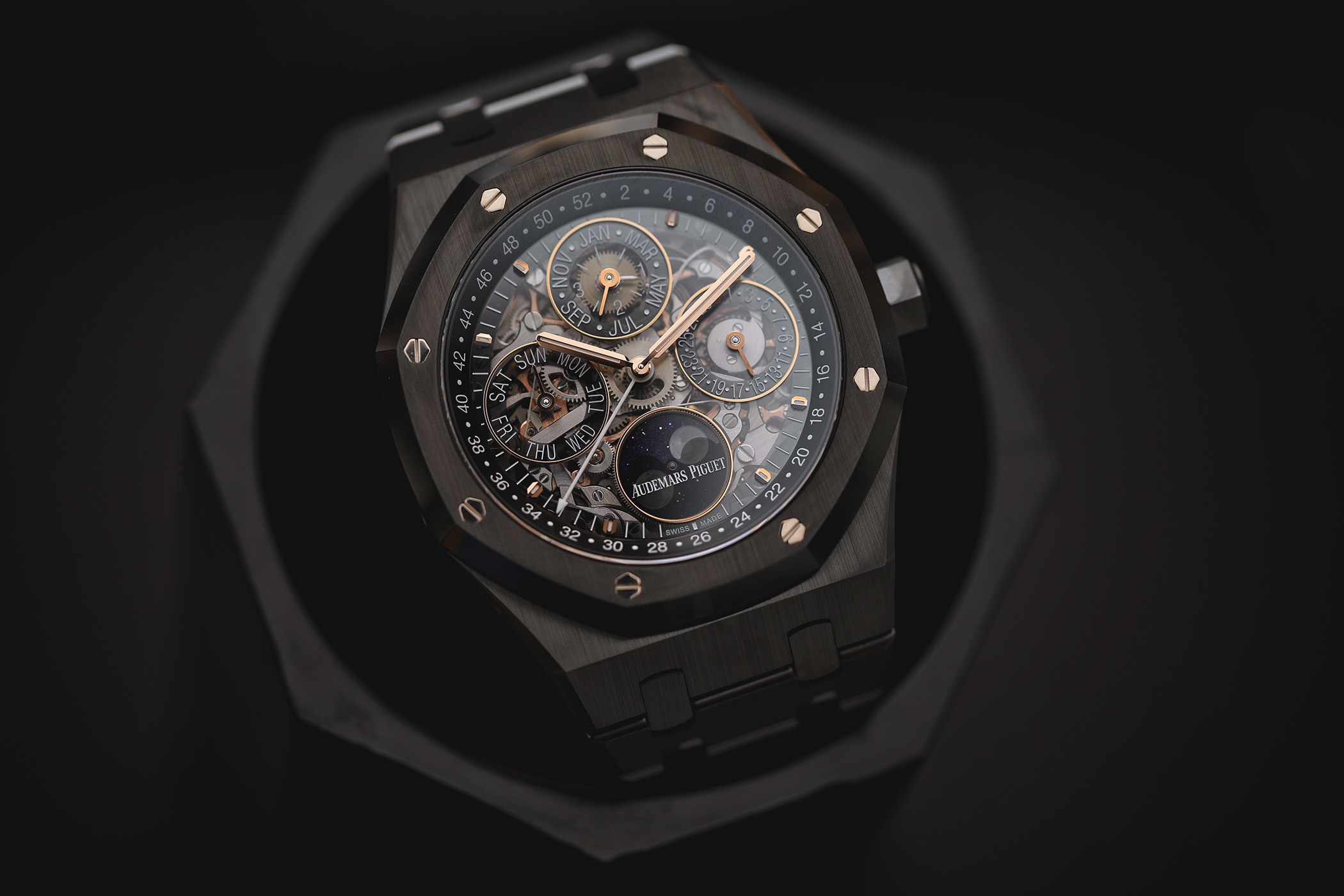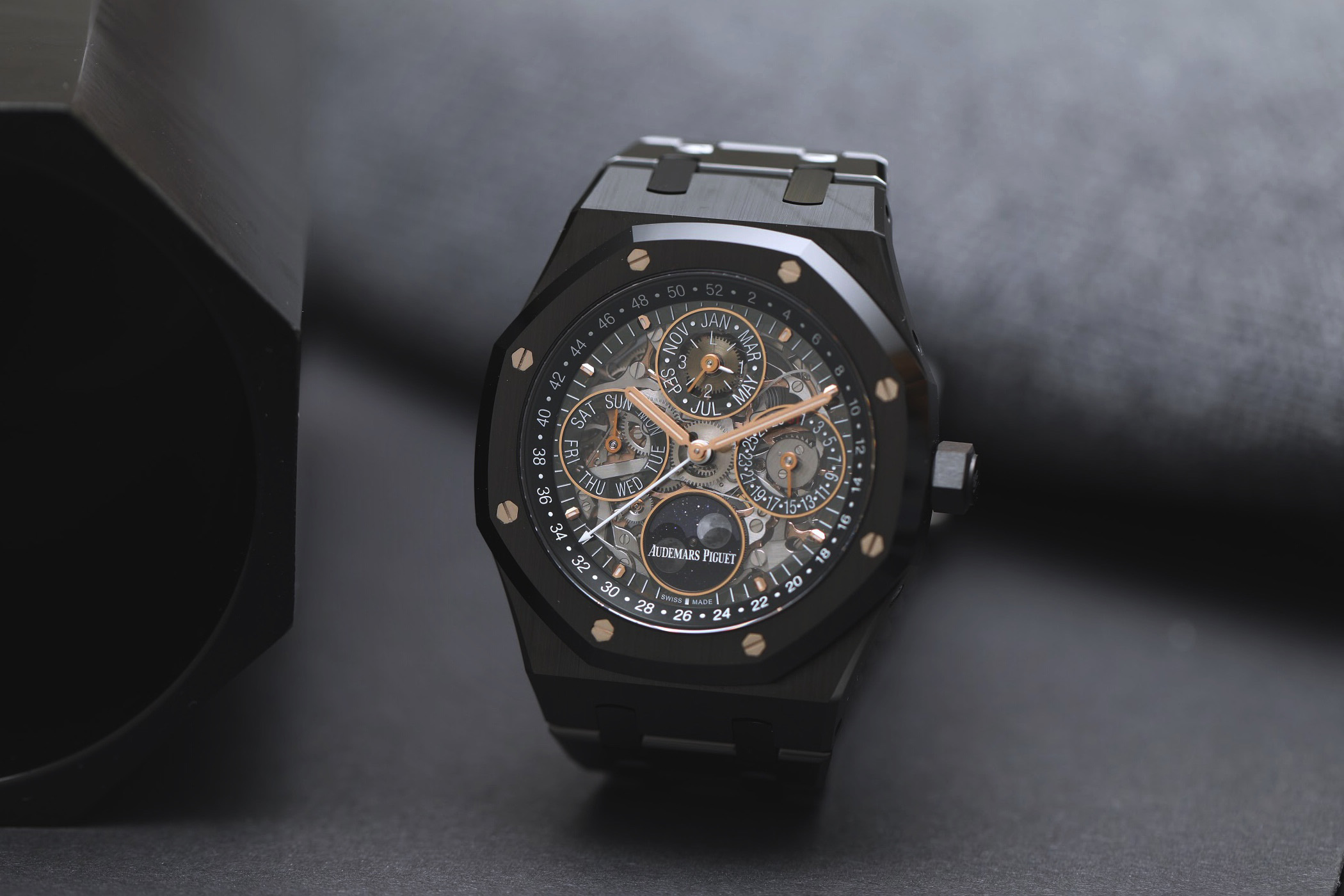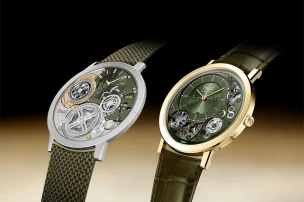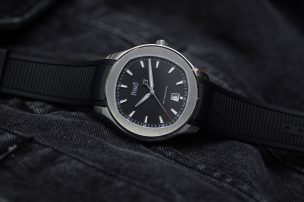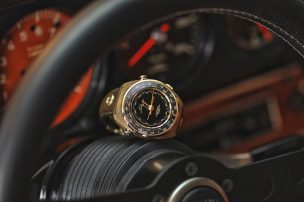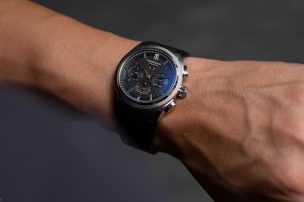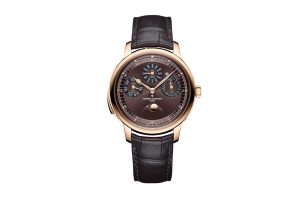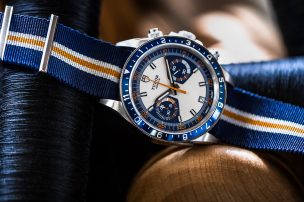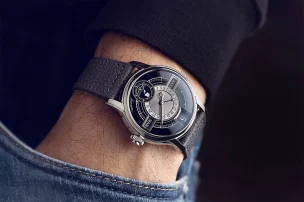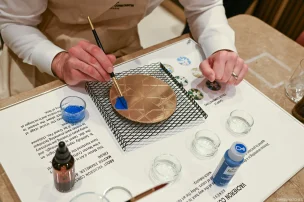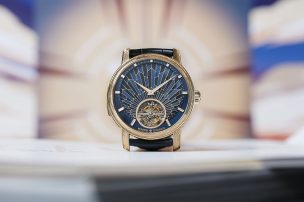
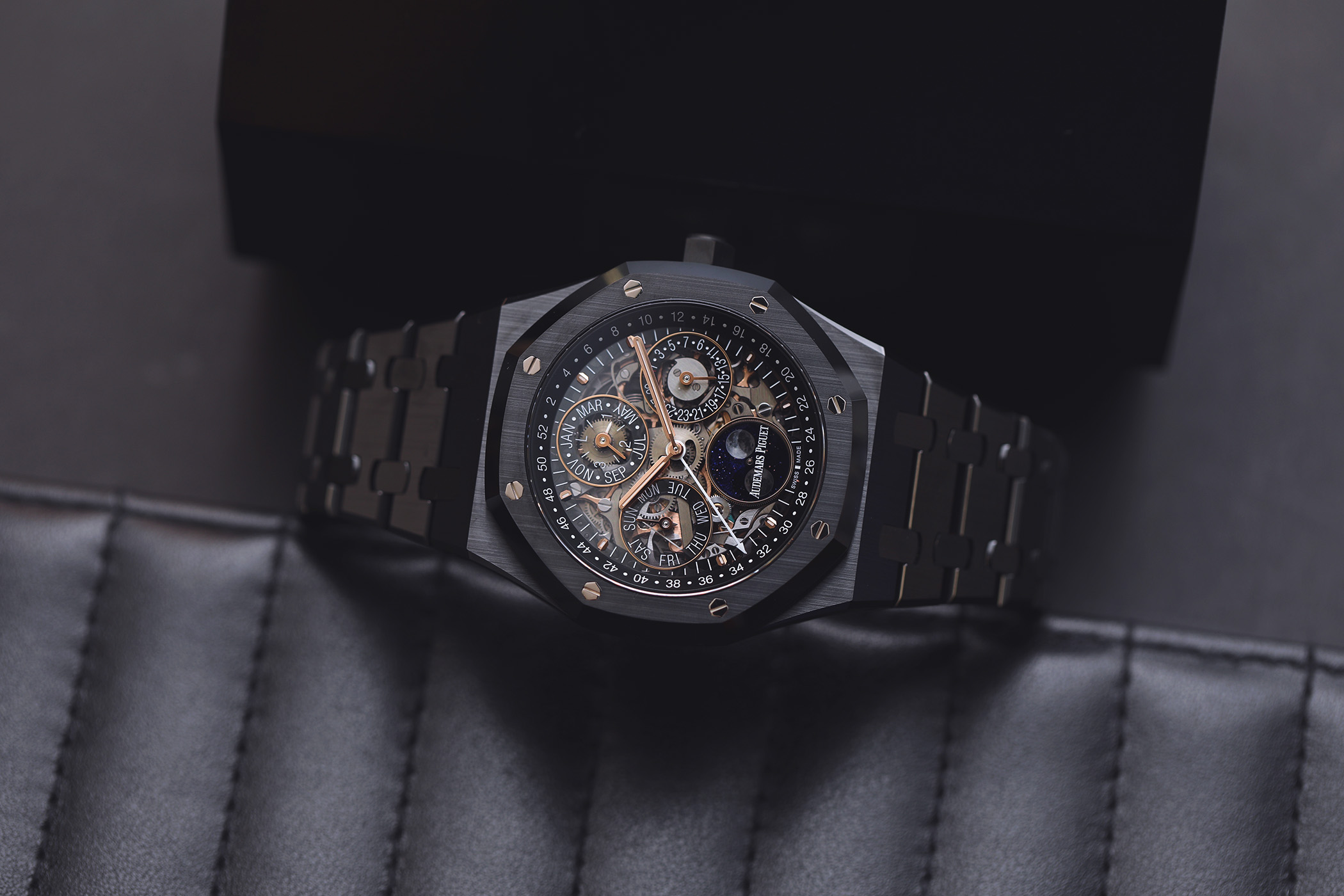
Point of View: Why the Royal Oak Ref. 26585 CE is One of the Most Important Watches in the History of Audemars Piguet
If I had asked my history teacher at school what history actually was, he would have probably told me that it was all about the past. Unfortunately, I never asked him as I would have been staring out of the window, perhaps pondering the next great watch from Audemars Piguet. One thing, however, is certain: history is not just about the past. It is about the present and the future as well – and one day everything we know of now will be history.
But this begs the question: Are there watches in current production that should be considered vitally important in the history of a brand? Or are they only truly considered so once they are discontinued?

Royal Oak Perpetual Calendar Skeleton
Ref. 26585CE.OO.1225CE.01
This is where the Royal Oak Ref. 26585 CE comes in. Introduced in 2019, it is one of the most sought after and minimally produced pieces from the current catalogue, and it may just become a future icon. Housed in a solid black ceramic case, the watch is a fully open-worked perpetual calendar with pink gold accents. This watch may be lightweight on the scales, but it’s certainly heavyweight in appearance. Paying homage to the past and looking deep into the future, here’s what makes, in my view, the Royal Oak Ref. 26585 CE one of the most historically important watches from Audemars Piguet.
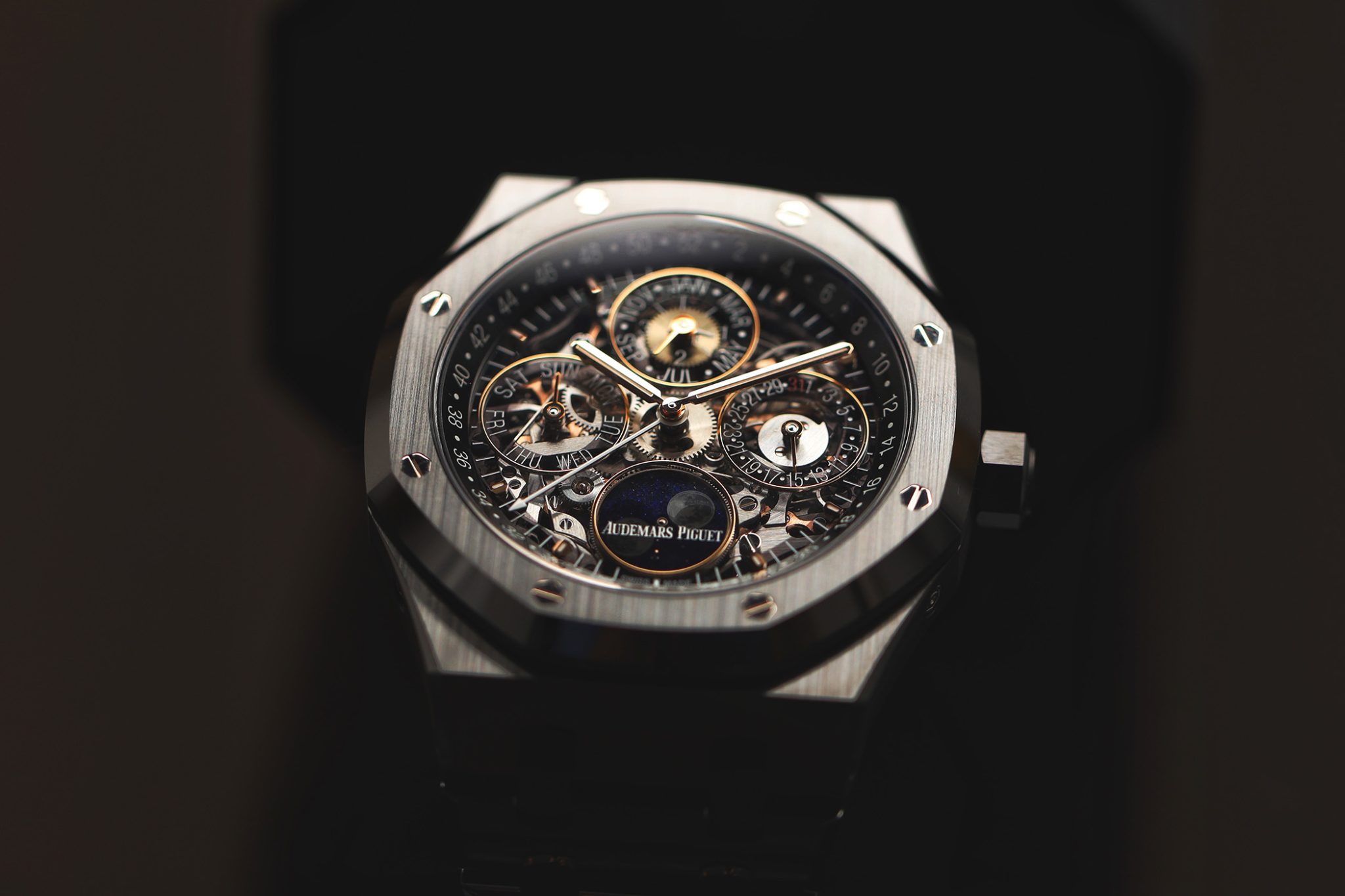
Perpetual Calendar
Firstly, the 26585 CE asserts its dominance in the form of a perpetual calendar. And the significance of a perpetual calendar from Audemars Piguet certainly carries some weight.
As boutique assistants are encouraged to share, AP was around long before the Royal Oak was introduced. Previously known for its complications, the brand has a rich history with perpetual calendars, or Quantième Perpétuels, with the first AP perpetual calendar wristwatch created in 1948. Since then, AP has continued to push the boundaries of perpetual calendars, producing the worlds thinnest automatic perpetual calendar not once, but twice; both in 1978 and 2018.
The first Royal Oak perpetual calendar, however, was born back in 1984, the Ref. 5554 in stainless steel, which in itself was quite an unusual offering. Fast forward to 2019, and equipped with the self-winding calibre 5135, the ceramic 26585 CE is also an unusual offering – but still it continues the path of AP’s perpetual history nonetheless. The hands and hour markers are finished in pink gold, with pink-gold subdial accents to match. When paired with the jet-black ceramic, we get an unusual yet mutually agreeable combination of materials and colours that has become iconic in its association with AP.

The watch’s case is made of black ceramic
Royal Oak
Despite the fact that Audemars Piguet had 97 years of history before the Royal Oak hit the press, the Royal Oak is undeniably the face of the brand as we know it today – possibly to the disapproval of some purists. Supposedly designed in one night in 1972 by the legendary Gérald Genta, the Ref. 5402 ST was the first ever Royal Oak, and played an important part in saving AP from the mass production of Japanese quartz movements.
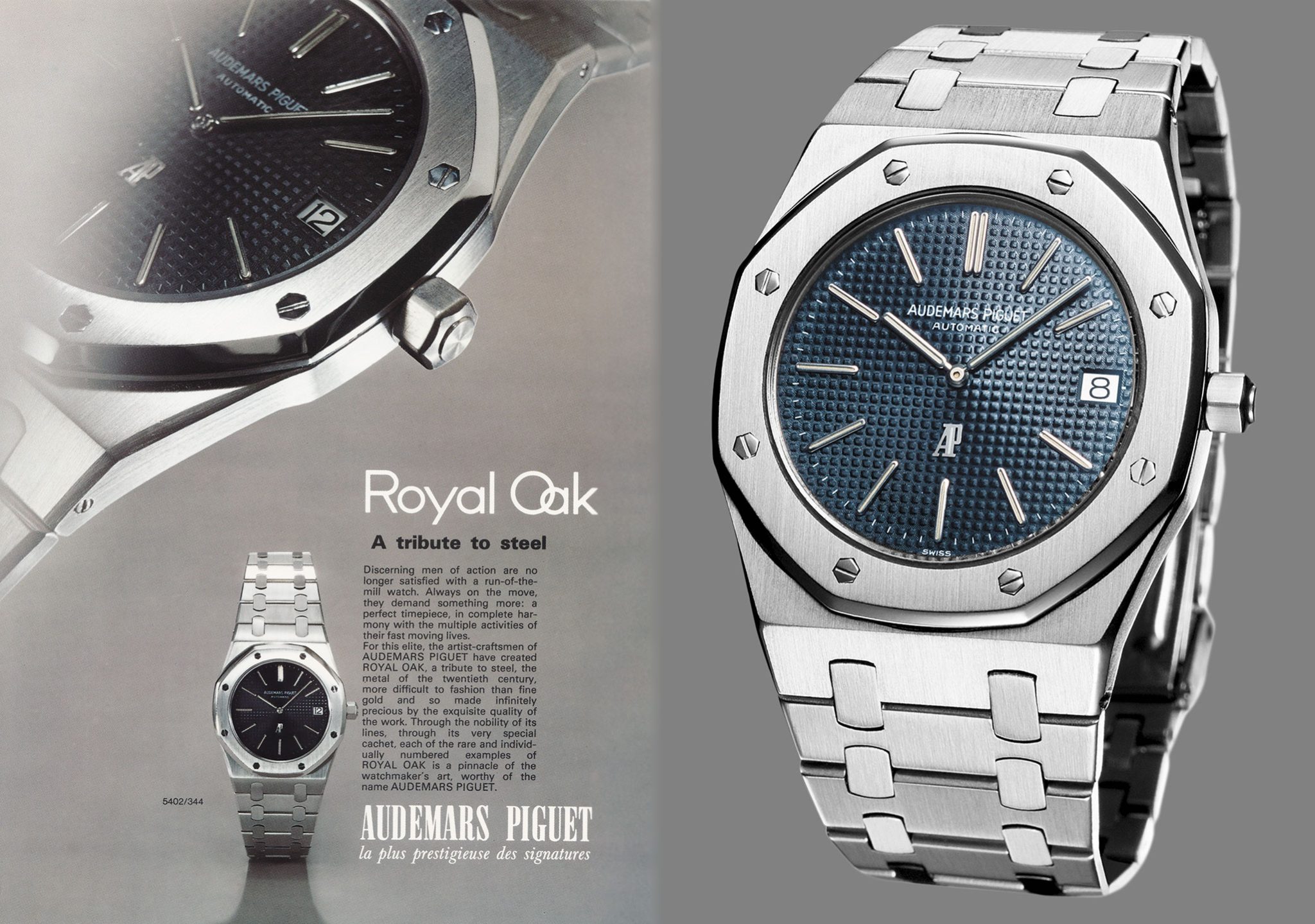
Last year, we found ourselves celebrating the 50th anniversary of the Royal Oak collection. All new Royal Oak watches released that year with sapphire casebacks were fitted with oscillating weights shaped ’50 years’.
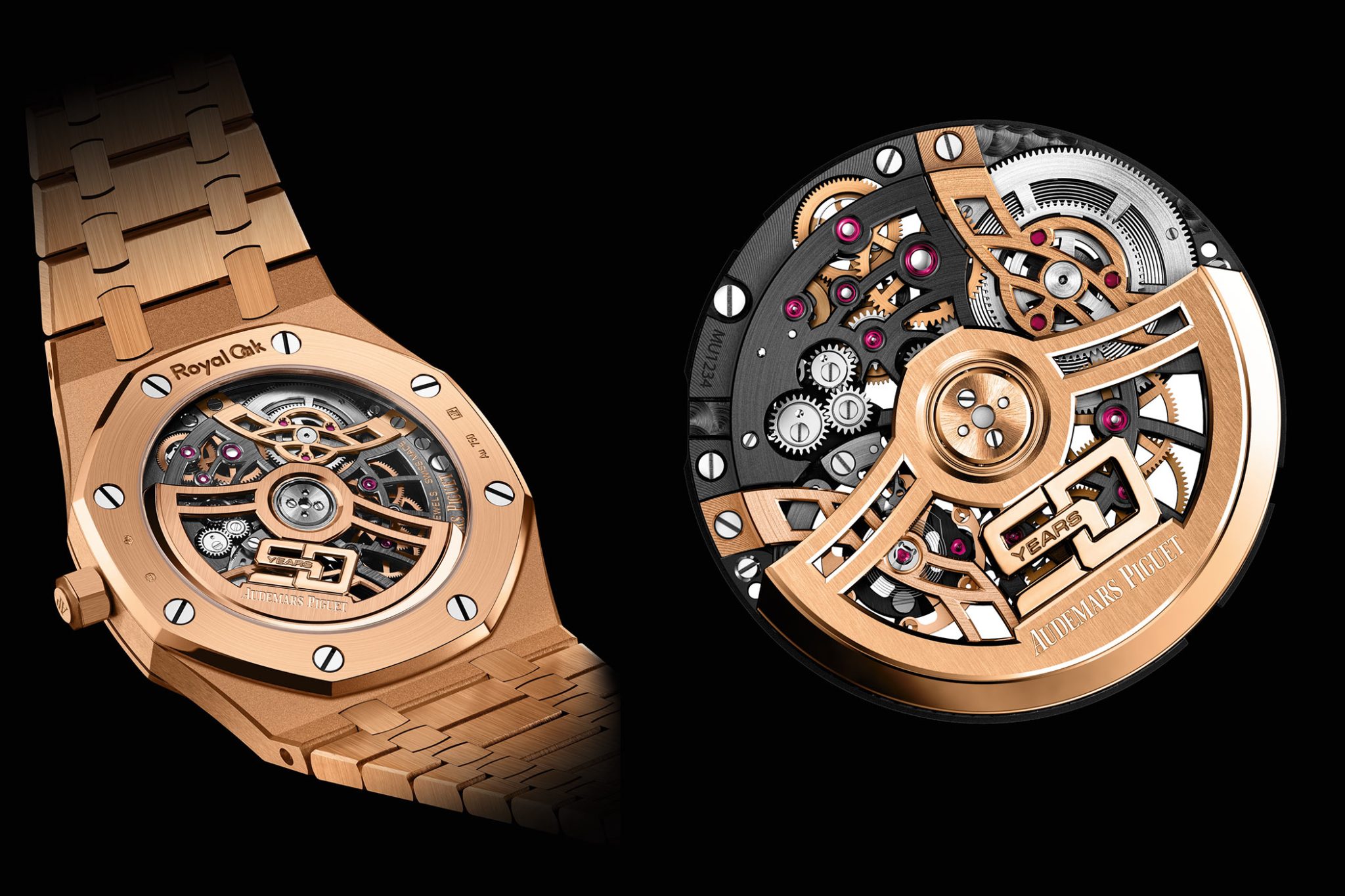
The 26585 CE, however, was not included within the 50th anniversary collection and wasn’t available with the anniversary oscillating weight. However, do not let this fool you into questioning the importance of a perpetual calendar within a Royal Oak; so important that a celebratory event isn’t necessary to bring this watch into the spotlight. As Wei Koh rightly stated in his summary of AP perpetual calendars, the initial Ref. 5554 represented the joining of forces between the two most revolutionary watchmaking achievements of Audemars Piguet: the Royal Oak and the worlds thinnest automatic perpetual calendar.
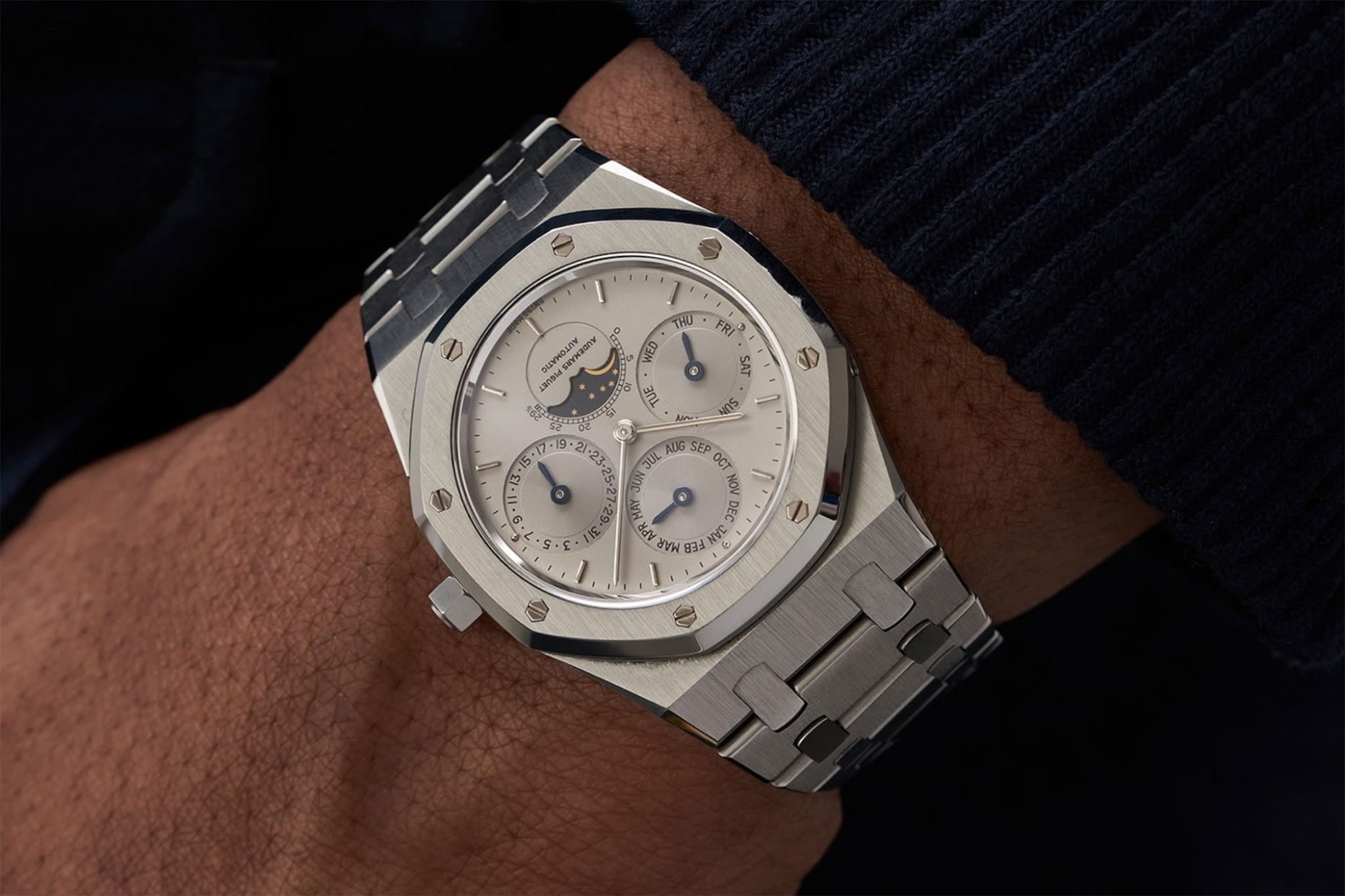
Royal Oak Perpetual Calendar Ref. 5554ST
Credit © Phillips
Following on from its ancestor, Ref. 5554, the 26585 CE also strikes the balance between the history of perpetual calendars with the later dominance of the Royal Oak. Perhaps completed in this way, it is aimed at a younger and sportier target market, but it can still fulfil the traditionalists.
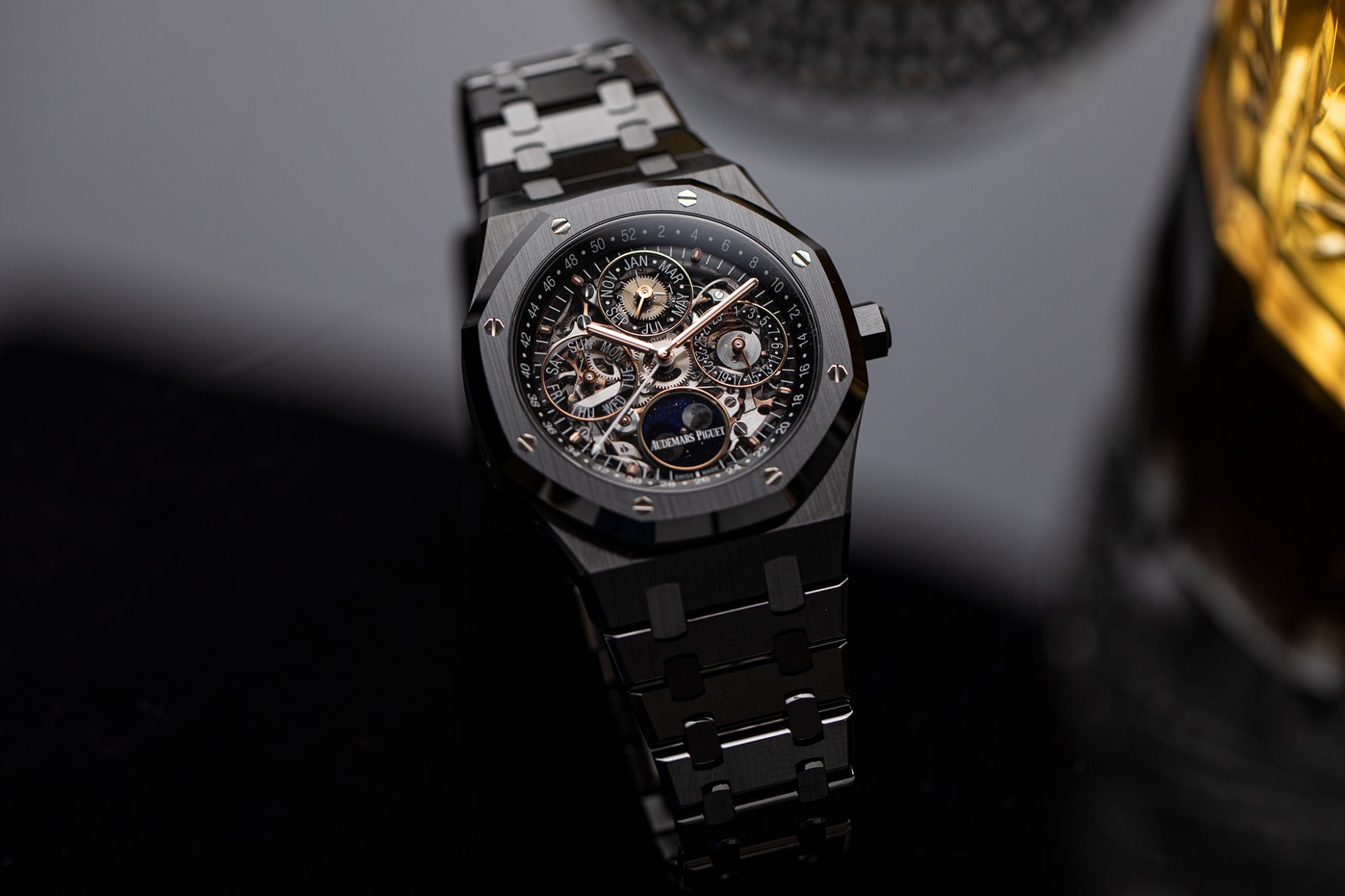
Diameter: 41 mm – Case height: 9.9 mm –Water resistance: 20 m
Open-Worked Dial
Now it’s about time we got to the open-worked dial, which is where things start to get serious for this watch.
AP may just be one of the hottest open-workers out there, with a significant variety on display. The first open-worked perpetual calendar Royal Oak was born in 1986 from the AP open-working workshop (quite the mouthful), a mere 2 years after the perpetual calendar was even put into the mighty Royal Oak chassis. The avant-garde Ref. 25636 was the first of its kind to exit the workshop and was produced initially in yellow gold only. Only one unit was sold that year. The next year platinum was introduced as the first of a further variety of metals throughout the reign of the reference. A total of only 313 units were sold across the ten- to eleven-year lifespan of 25636, making just about any variant very rare indeed. Photographed below is a steel version.

Royal Oak Perpetual Calendar Ref. 25636ST
Credit © Phillips

Royal Oak Perpetual Calendar Ref. 25636BA
Credit © Christie’s
The modern day Ref. 26585 CE is a respectful twist on the first open-worked perpetual calendar Royal Oak, with an addition in the form of a week indicator and leap year indicator, the prior not so common in perpetual calendars even today. Produced in very few quantities, it doesn’t find itself diverting from the finite production numbers that its grandparents experienced. Although we don’t know the exact number of units produced, it is probably about as rare as production Royal Oaks get, which is reasonable considering the complexity of the contributing factors. Just to get an idea, a quick browse online shows approximately ten for sale worldwide with legitimate photographs.
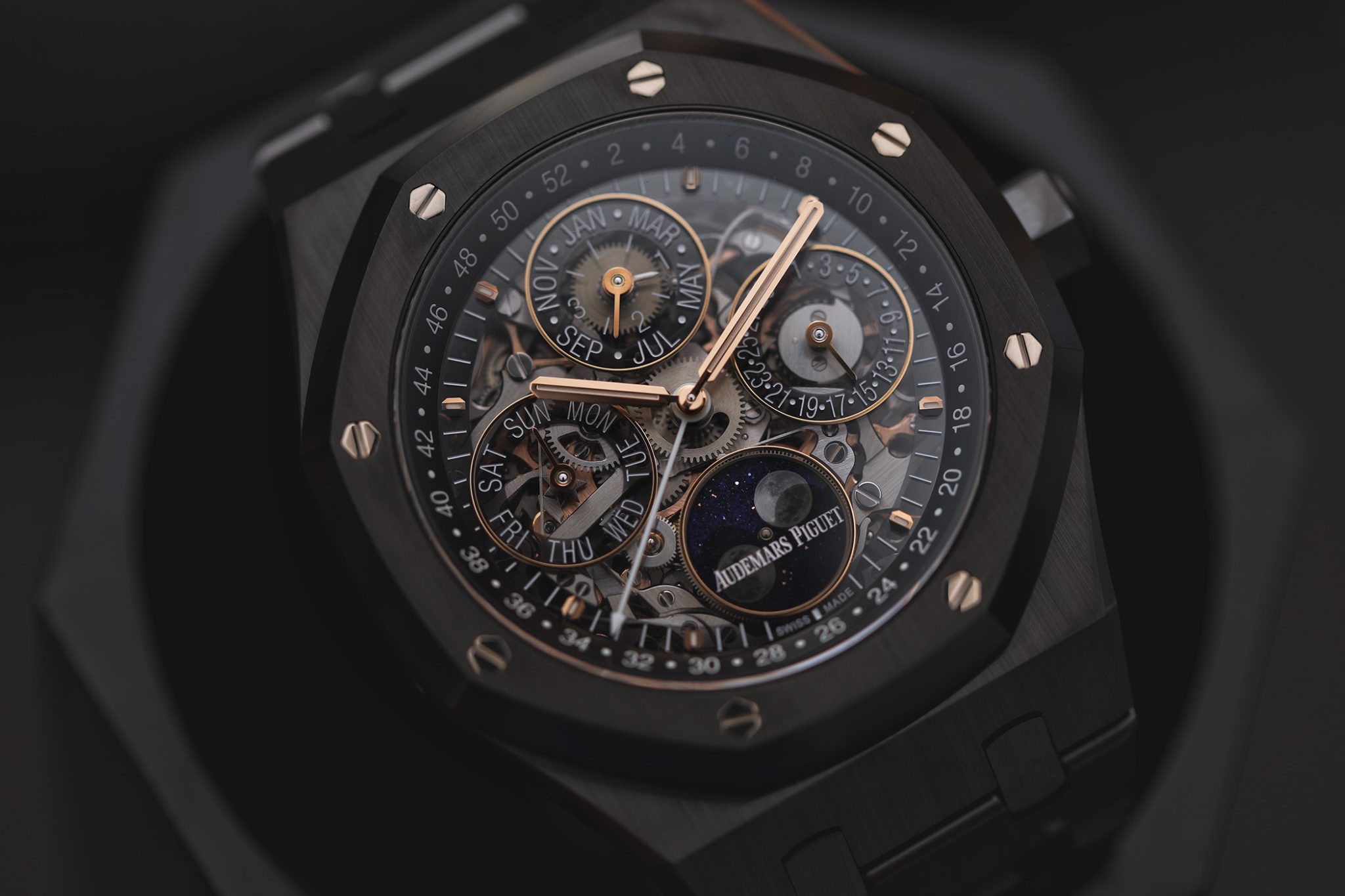
The dial makes the most of sapphire crystal
Ceramic
We are left with perhaps the most obvious of characteristics, but one which represents a completely new generation of watches, both for AP and the entire industry. Stealthy black ceramic.

Audemars Piguet has only been producing Royal Oaks with ceramic cases and bracelets for four years now, which is not long at all for a watch brand that’s been around since the late 19th century. The ceramic case and bracelet of the 26585 CE is a futuristic outfit for such a statement wristwatch, as the complexity involved in producing them is no joke. Most people thought it was impossible when the recently departed CEO François-Henry Bennahmias initially suggested it. Small clues that remind us of the difficulty of working with ceramic are present, such as the clasp. Conspicuous by its absence on all ceramic models is the square with the ‘AP’ logo. This is because the pressure exerted on it when the butterfly switches are pushed could be enough to crack it, if it were made from ceramic.

The bracelet is made of black ceramic, while the AP folding clasp is titanium
The 26585 CE is also one of the few ceramic references that features a ceramic case back. Rather puzzlingly, most of the ceramic offerings are produced with titanium case backs. Puzzled too was well respected haute collector @Horology_ancienne (via Instagram) who soon later concluded from François-Henry Bennahmias that the thin nature of the casebacks posed difficulty when produced in ceramic, especially in larger numbers. As a result, they are limited to the most exclusive of pieces.

The calibre 5135: Power reserve – 40 hours, Components – 374, Frequency – 2.75 Hz (19.800 vph)
Ceramic cases and bracelets are also a representation of one more of Audemars Piguet’s most important identities: finishing. The finishing on any watch that leaves Le Brassus is already crème de la crème, but with a Royal Oak this becomes further accentuated. Such a faceted case and bracelet exposes the extent of true craftsmanship; immaculately polished bevels and edges so sharp that one might quickly find themselves looking for the first aid kit. For this level of finishing to remain consistent even amongst ceramic cases and bracelets is quite the formidable achievement. As a result, it takes supposedly five times as long when compared to stainless steel.
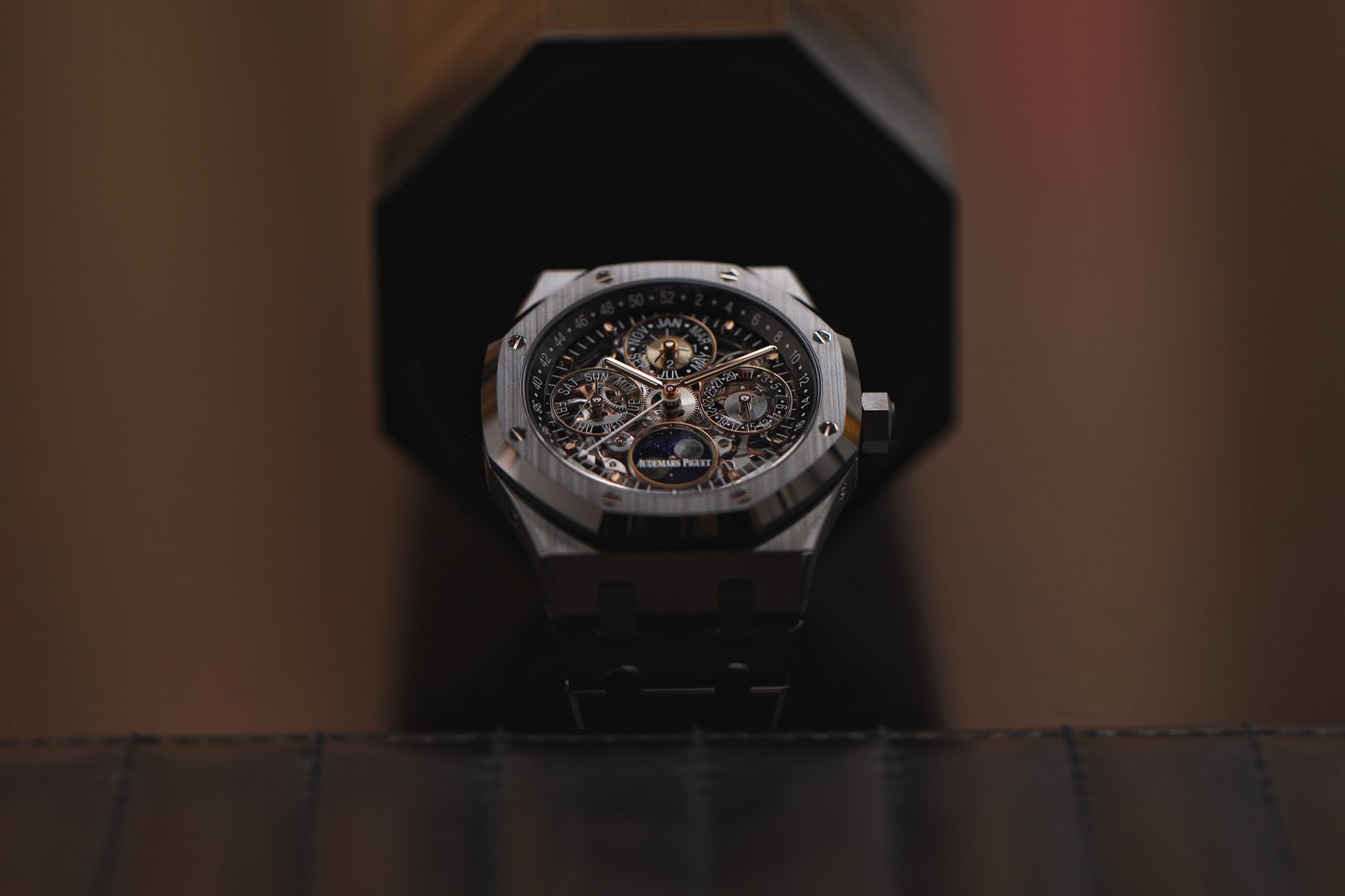
A true icon
AP have truly graced us with the Ref. 26585 CE, an important milestone wristwatch that presents itself perfectly between the history and the future of the brand. But more than that, it is also an offering that combines important characteristics and achievements of Audemars Piguet that collectors and enthusiasts hold dear. The complicated perpetual calendar, the immaculately open-worked dial and the highest level of finishing on a futuristic, all ceramic Royal Oak canvas. Just as Aristotle famously said; ‘The whole is greater than the sum of its parts.’

A watch of this importance should never be in mass production, if that even existed in the Vallée De Joux. Supposedly no more than 600 units were produced of the regular perpetual calendar in black ceramic. A general appreciation of how difficult open working a perpetual calendar is along with the ceramic caseback can conclude that far fewer examples of the 26585 CE will have been produced. When the time is up for this watch, it will leave the production floor and be rightfully given a standing ovation on its entrance to the Audemars Piguet hall of fame, where it will be met by many other long-standing icons. A futuristic piece for the present, but a historical piece for the future.

